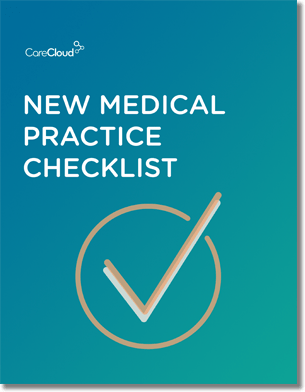A unique perspective emerged from last week’s Connecting Healthcare + Social Media Conference in New York when Mike Sevilla, MD, family physician, and blogger at Family Medicine Rocks, took the stage to present his own social media story. He also had a lot to say about why physicians need to be on social media.
“I’m in a group of four family docs and a practitioner, and yes, I do social media,” said Sevilla. “What do I write about, and what’s my point? What I wanted to do was bring the reader into the exam room with me…I wanted to let the reader know how difficult it is to take care of patients in this broken healthcare system. It wasn’t the blogging – it was the interaction – and, eventually, it will be patients who drive physicians and providers to use social media.”
Sevilla talked through six areas in which physicians can utilize social media:
1. To tell your story. Whatever specialty you’re in, said Sevilla, having a social media presence, and even a blog presence, is all about having a voice. “What you’ll hear today is, social media is about telling stories,” he said, adding that having an online outlet allows current and prospective patients to hear directly from you. “Not only can you tell your story, but you can also clarify other people’s story, which may be the wrong story,” he said. “I say all the time, we let people tell the story of family medicine and it’s the wrong story.”
2. To find a community. Providers and physicians have online communities, said Sevilla, and joining one of them is something he highly recommends. Sevilla referenced his own community of family physicians as an example. “It’s a family medicine revolution, but we collaborate across the country and we find passionate people. We say, ‘What’s cool in your community that we can talk about? How can I share this with people in my community, and how does family medicine have some of the solutions to handle the broken healthcare system?'”
3. To express opinions and commentary. During the mid-2000s, said Sevilla, doctors were more open to discussing patients in their blogging and social media forums – something that didn’t bode well for a few in particular. One doctor, Sevilla said, even continued to blog during a malpractice suit. “So the lessons are easy: Don’t blog during your malpractice trial,” he joked. It was during that time period, however, that Sevilla “switched” his own blogging endeavors and began to talk about news events and his point of view as a family physician. “And then I started dabbling in other things like podcasts, YouTube videos,” he said. “Why? Because I’m geeky and I was interested. And of course, I failed at some points, and then, as the years went on, good things started to happen.”
4. To discover what you’re passionate about. About a year ago, Sevilla “rebranded” himself from Doctor Anonymous to the blogger behind Family Medicine Rocks. “And what do I talk about now? Things I’m passionate about, and how family medicine has the solutions to fix the broken healthcare system,” he said. Since his rebranding, Sevilla has ventured out into audio podcasts, videos, and more, all while sticking to what he feels most strongly about. Wondering where to start, or how to discover your niche? “Whenever you see someone giving a presentation or anything like that,” he said. “It could be about gardening, even. It’s whatever you’re passionate about.”
5. To conduct social media marketing. One perk of being on social media that’s seemingly a given? “Social media marketing,” said Sevilla. “So if you’re a hospital system, or whatever, this is free marketing.” Tweeting, Facebooking, blogging, and more are some of the easiest ways to connect with people. “This is marketing,” he said. “Ten years ago, people asked how much does it cost for print, etc. This [costs] zero.”
6. To manage your online reputation and streamline your practice. Online reputation management, Sevilla said, is a key reason to at least consider creating an online/social media presence. “I say [to physicians and providers], go to the computer, turn it on, [search] your name, and what do you get? A lot are surprised their first link isn’t when they were named physician of the year – it’s a physician-rating site called HealthGrades, and when they read it, they’re shocked that patients are talking about them and they didn’t know it.” Social media is a powerful tool, Sevilla added, and providers and physicians need to know not only about how to use it but also how to use it to their advantage. “Especially primary docs,” he said. “If there are things you talk about 15 times a day, take a flip cam, record it and say ‘Hey, here’s the short answer. For the long answer, go to the website.’ This is why physicians should do this.”

Do you know what you need when setting up a new medical practice?



